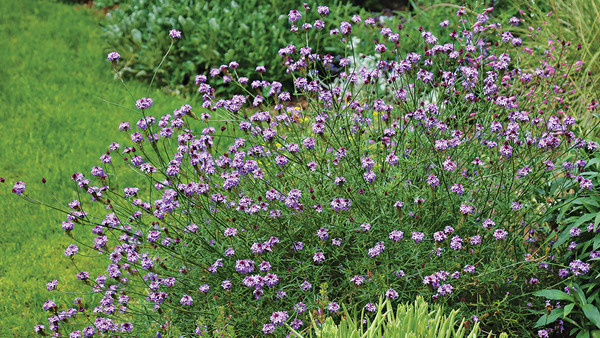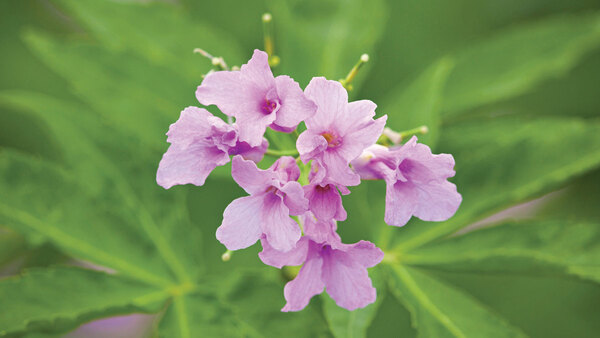
We all have certain plants that immediately come to mind when thinking of a garden in spring. For many, these are daffodils, tulips, and hyacinths skirting the trunks of flowering magnolias, cherries, and lilacs. But as William Cullina discusses in his article 9 Perennials to Liven Up Your Spring Garden, there are lots of out-of-the-ordinary or simply underappreciated plants that can elevate your spring garden to something spectacular.
Find some outstanding spring plants for the Northwest below. And discover even more surprising spring stars in 9 Perennials to Liven Up Your Spring Garden.
1. Western Columbine

Name: Aquilegia formosa
Zones: 4–9
Size: 24 to 30 inches tall and 12 inches wide
Conditions: Partial shade with protection from hot afternoon sun; adaptable to a range of soil conditions but prefers rich, moist, well-drained soil
Native range: Western North America
Overlooked by gardeners lured in by its fl ashier hybrid cousins, Western columbine has smaller, daintier flowers that display an elegance and charm lacking in the new compact cultivars. In midspring, this native wildflower sends up thin, gracefully arching, branched stems that sport bicolor blooms of reddish orange and yellow. The long, tapered spurs are a picture of elegance. Though short-lived, the plant will self-sow if you allow the seed heads to mature. Weave it in among late-emerging perennials, or add it to the edge of a woodland garden.
2. Merrybells

Name: Uvularia grandiflora
Zones: 4–9
Size: 18 to 24 inches tall and 12 inches wide
Conditions: Partial shade; organically rich, consistently moist, well-drained soil
Native range: Eastern to central North America
This extraordinary wildflower should be in everyone’s garden. In early spring, vibrant green shoots emerge in a tight clump. Unusual perfoliate leaves encircle the graceful stems, which branch and arch at their tips, ending in one or two delicate, bright yellow, bell-shaped flowers with long, twisted petals. The leaves are pea green above and blue green below, which adds brightness to the shade garden. This is one of the most charming wildflowers.
3. Glory-of-the-Snow

Name: Scilla luciliae (syn. Chionodoxa luciliae)
Zones: 3–8
Size: 6 inches tall and wide
Conditions: Full sun; tolerant of most soil types; drought tolerant once established
Native range: Western Turkey
This easy spring flower has long been overshadowed by larger blooming bulbs. The delight of glory-in-the-snow is the charming, star-shaped, violet-blue flowers, each with a bright white eye, that are produced in copious quantities in early spring. The early bloom period makes it a great companion for crocus (Crocus spp. and cvs., Zones 3–8) and snowdrops (Galanthus spp. and cvs., Zones 3–7). If allowed ample space, it can naturalize to form large patches, although in the Pacific Northwest it is rarely weedy.
4. Downy Clematis

Name: Clematis macropetala
Zones: 3–9
Size: Vining 10 to 12 feet
Conditions: Partial shade with protection from hot afternoon sun; consistently moist, fertile, well-drained soil
Native range: Siberia, Mongolia, China
Most of us are familiar with the large-flowered, early-summer-blooming clematis that can be finicky in the garden. This species is much easier to grow, and it opens your eyes to the diversity of the genus. Downy clematis is a midspring bloomer with unusual bell- or star-shaped flowers with strappy petals that can cover the small- to medium-sized vine. If it starts to outgrow its space, it is easily pruned after flowering to control growth. Several beautiful cultivars are available, ranging from deep purple to violet blue to lavender to blush pink. An added perk of this lovely vine is that it is resistant to clematis wilt.
Richie Steffen is executive director of the Elisabeth C. Miller Botanical Garden in Seattle.
Fine Gardening Recommended Products

The Crevice Garden: How to make the perfect home for plants from rocky places
Fine Gardening receives a commission for items purchased through links on this site, including Amazon Associates and other affiliate advertising programs.

ARS Telescoping Long Reach Pruner
Fine Gardening receives a commission for items purchased through links on this site, including Amazon Associates and other affiliate advertising programs.

Gardener's Log Book from NYBG
Fine Gardening receives a commission for items purchased through links on this site, including Amazon Associates and other affiliate advertising programs.



















Comments
Thanks Richie! Added all these plants to my spring list search.
Log in or create an account to post a comment.
Sign up Log in